I love documenting bird behaviors, even the mundane ones.
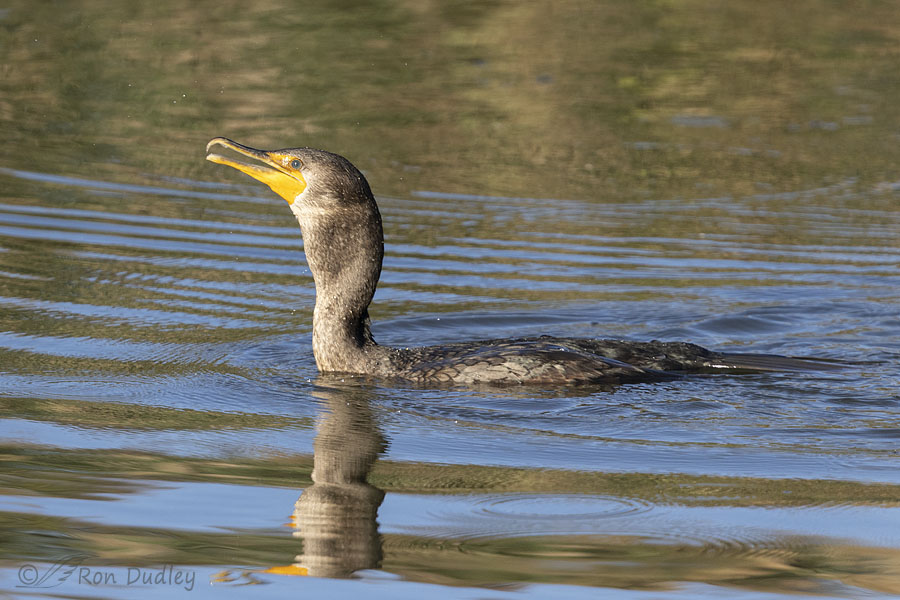
Two days ago I spotted this immature Double-crested Cormorant with a moderate-sized fish in ‘his’ bill at Farmington Bay WMA. But I had to back up to the canal he was in to get him on the ‘right’ side of my pickup so by the time I was in position it was too late to see the fish, barely. This is the first shot I got of him and by then the fish was already out of sight, although we can see the bulge in his throat caused by the fish as he was swallowing it.
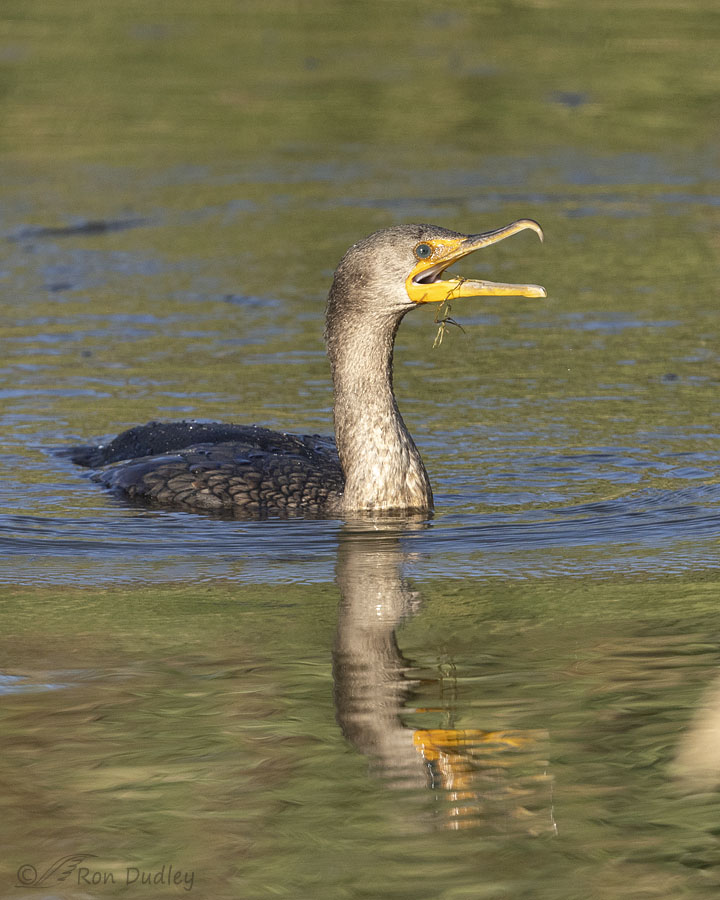
After he swallowed the fish there was still some debris, aquatic vegetation?, hanging from his bill. And he wasn’t happy about it.
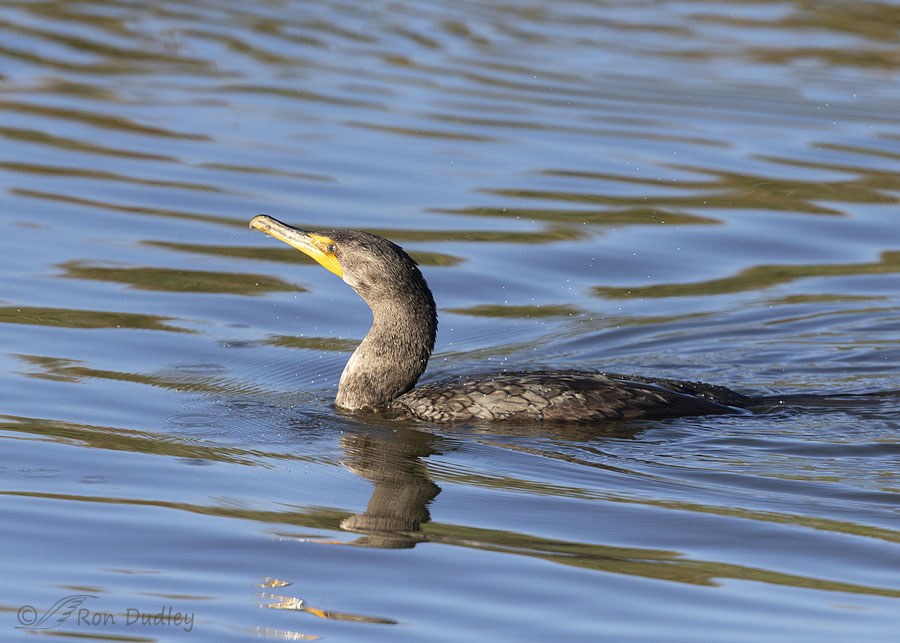
After that I wasn’t taking many photos of him for a while but in this one, at first, it looked like he’d been able to rid himself of the debris.
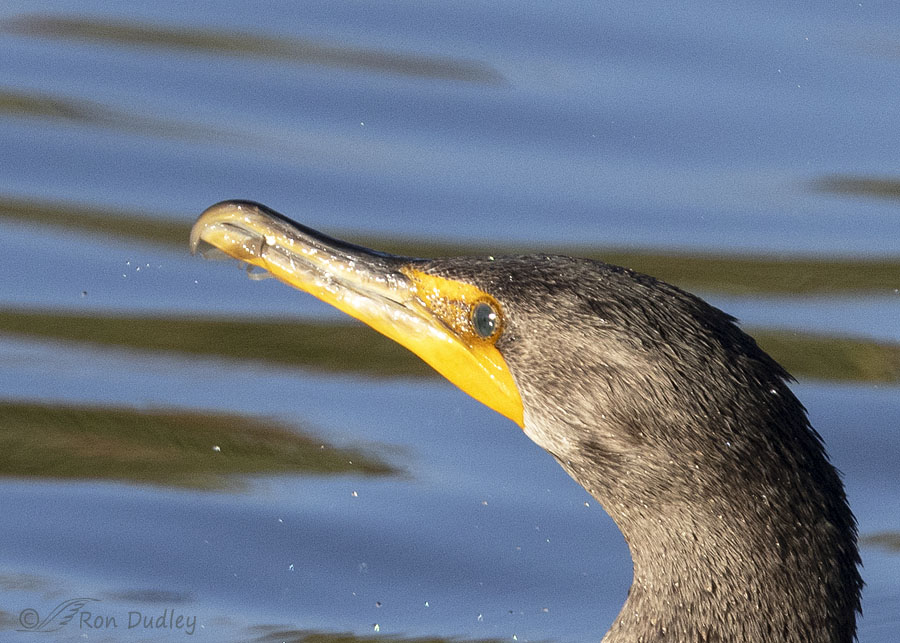
But a closer look at the same photo reveals that there’s still some of it near the end of his bill. This little bit of debris became quite a problem for him.
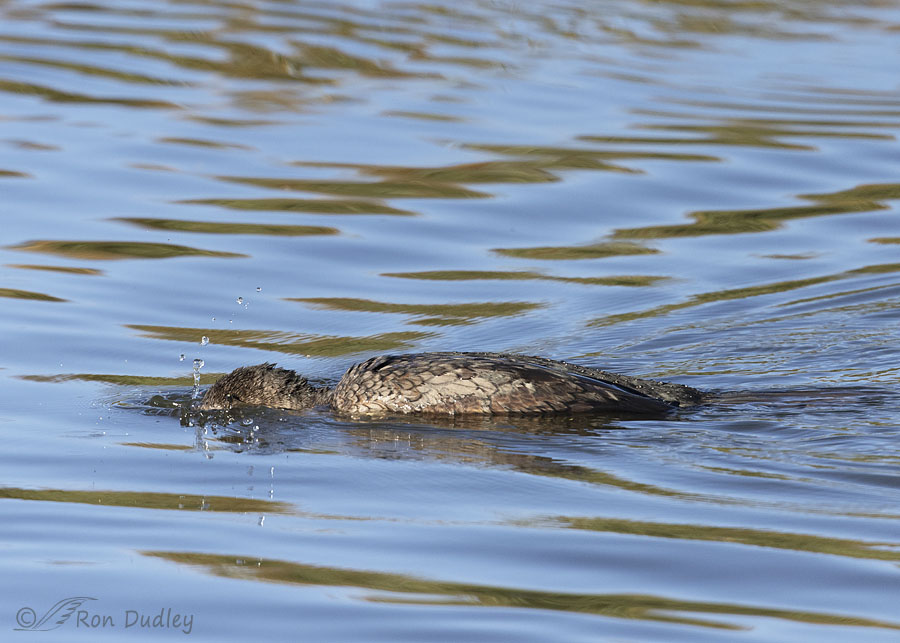
He dipped his head into the water and then…
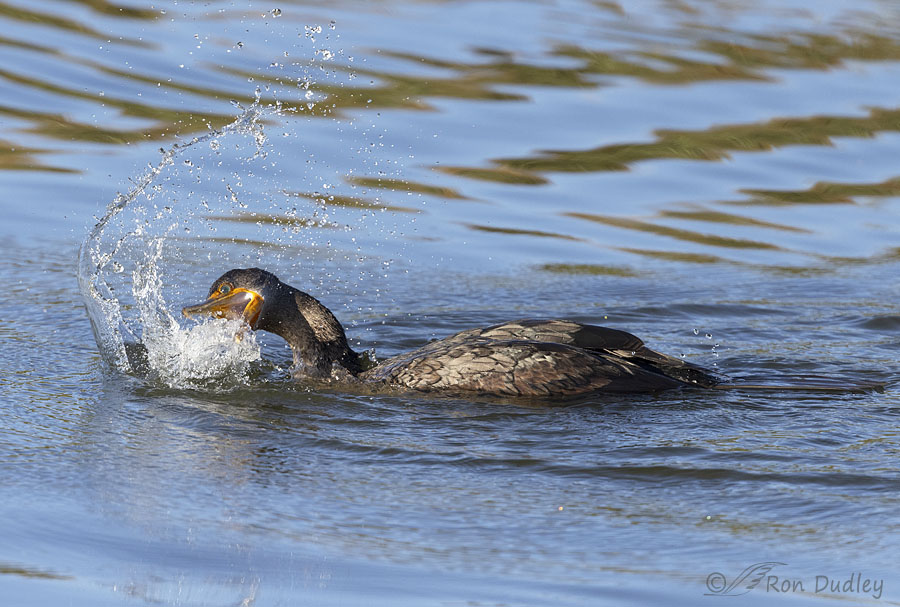
began thrashing his bill through the water back and forth from side to side in an apparent attempt to get rid of it. All that thrashing created quite a water splash.
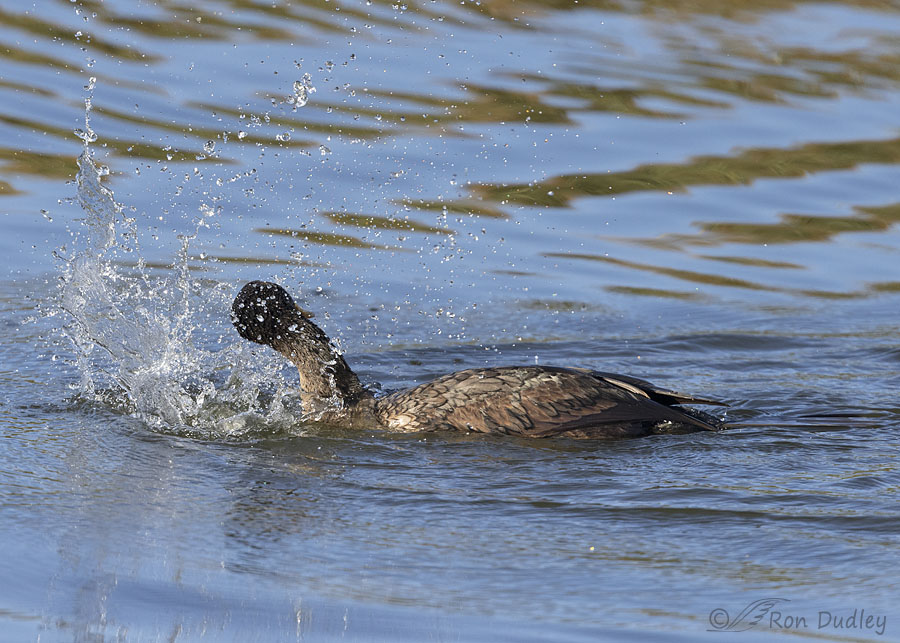
But apparently the thrashing didn’t solve his problem so…
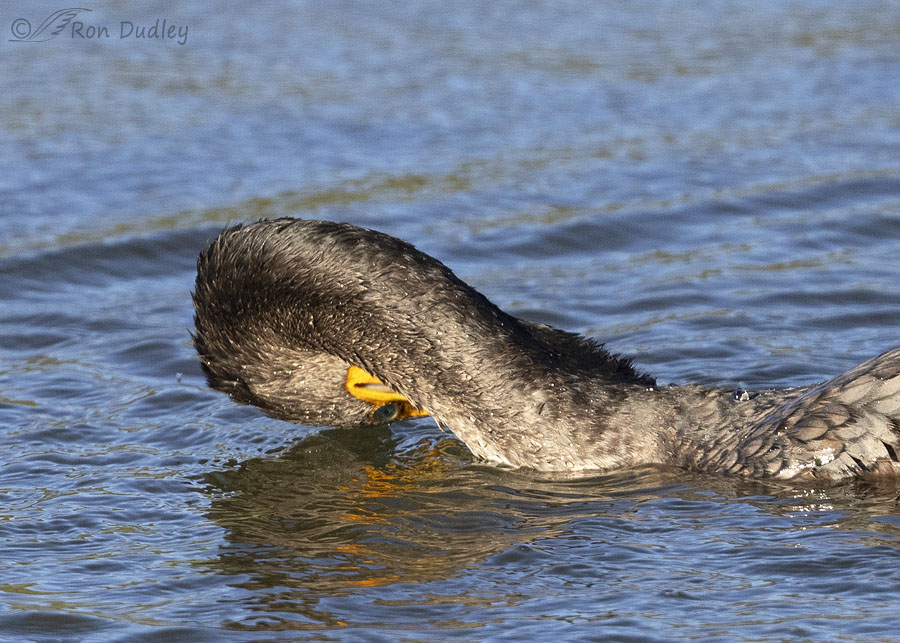
he bent his upper neck 180° so he could wipe his bill across the bottom of his lower neck. I don’t believe this was regular preening – he was still trying to rid himself of that nasty stuff stuck in his bill. At this point I was wondering if he was wishing he had hands.
Apparently this last effort worked because it was then that he…
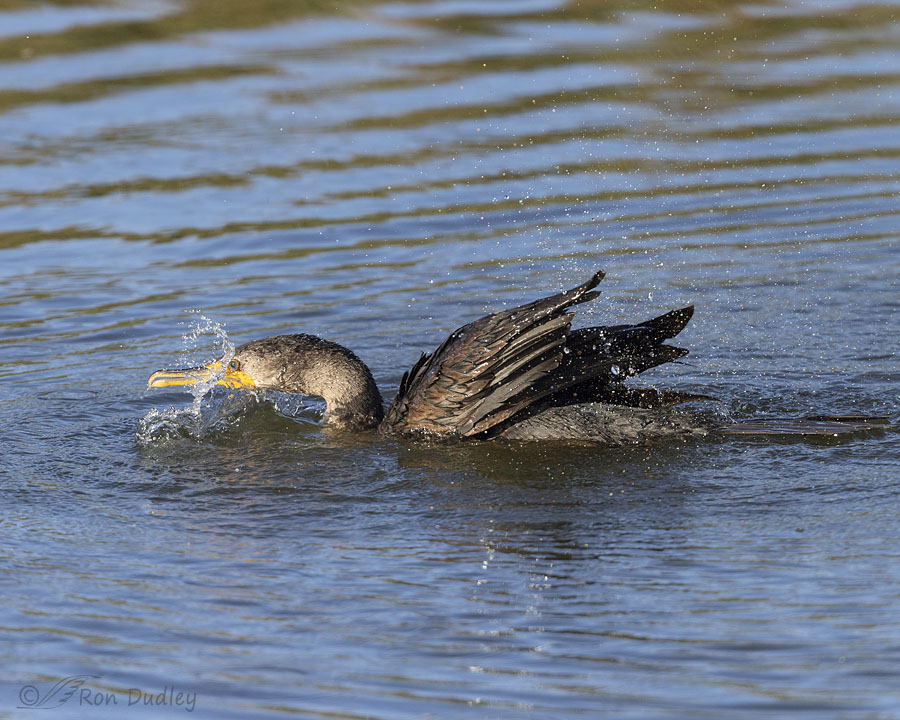
transitioned from trying to clear his bill to taking a bath. During his very long bath (I took 290 photos of him while he was bathing) he…
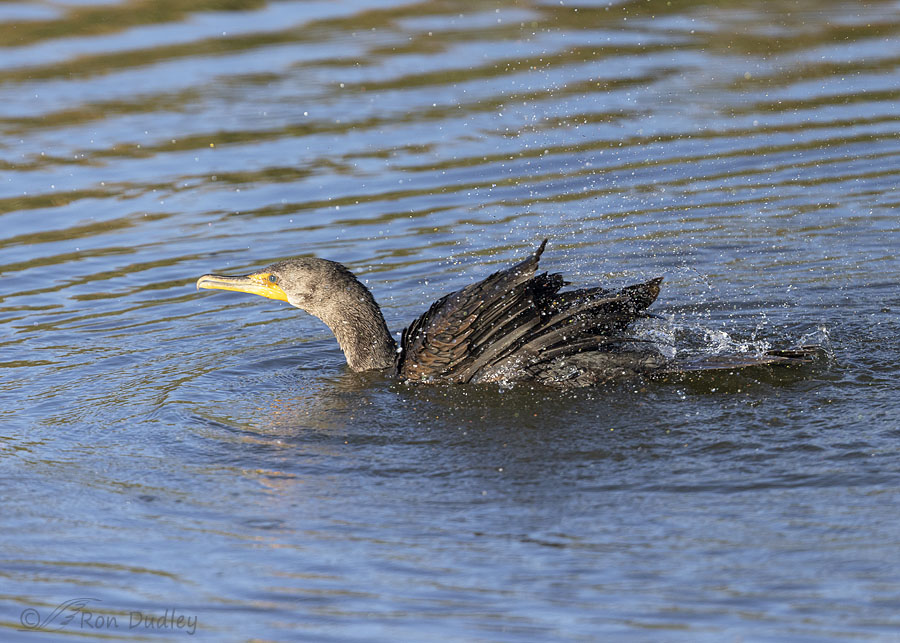
spent nearly all of his time quivering his body feathers, which threw water up and over his back and drenched him completely. It strongly reminded me of a bellowing male crocodile, without the bellowing.
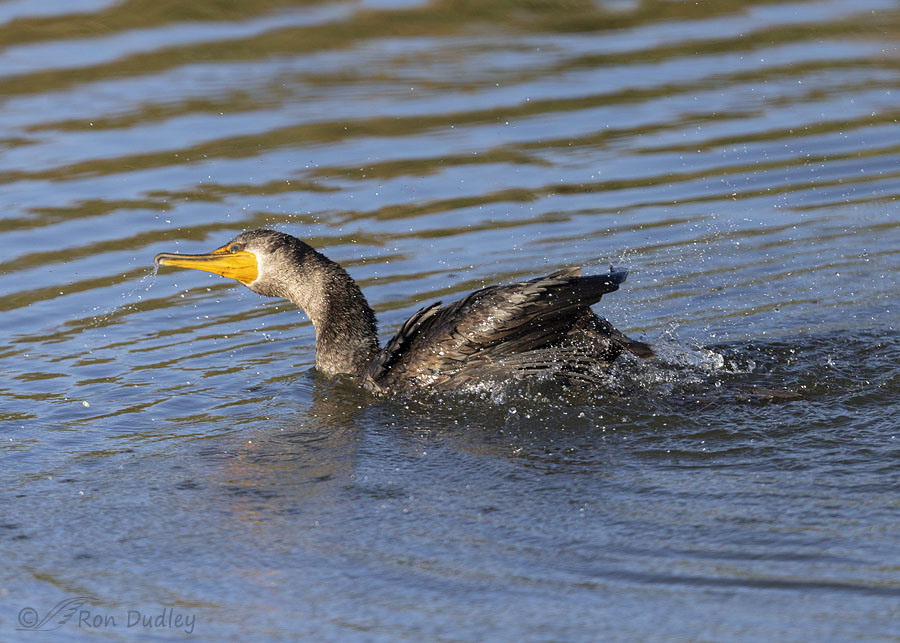
He only shook his head and neck…
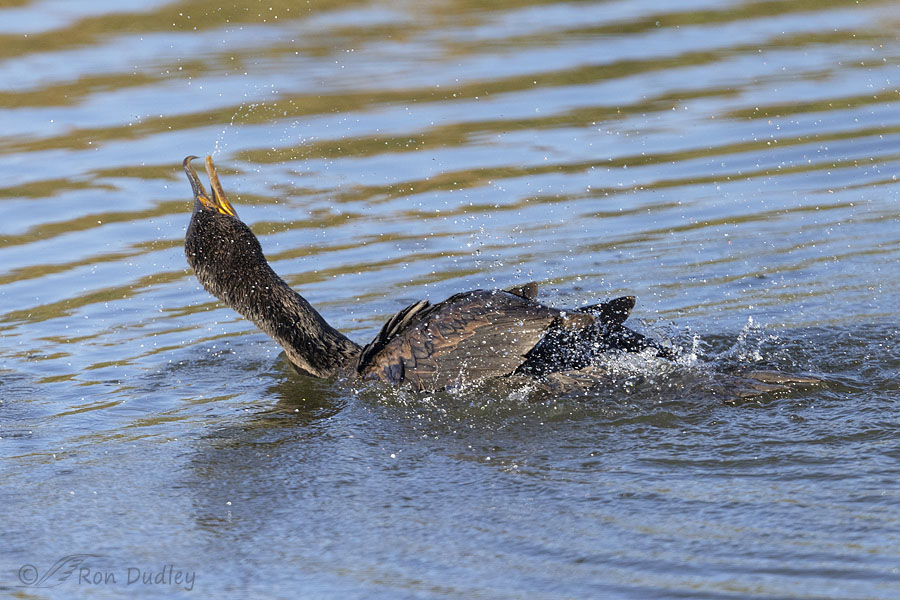
once in that entire time and after he’d successfully rid himself of the debris in his bill he never again dipped his head and neck into the water that I noticed.
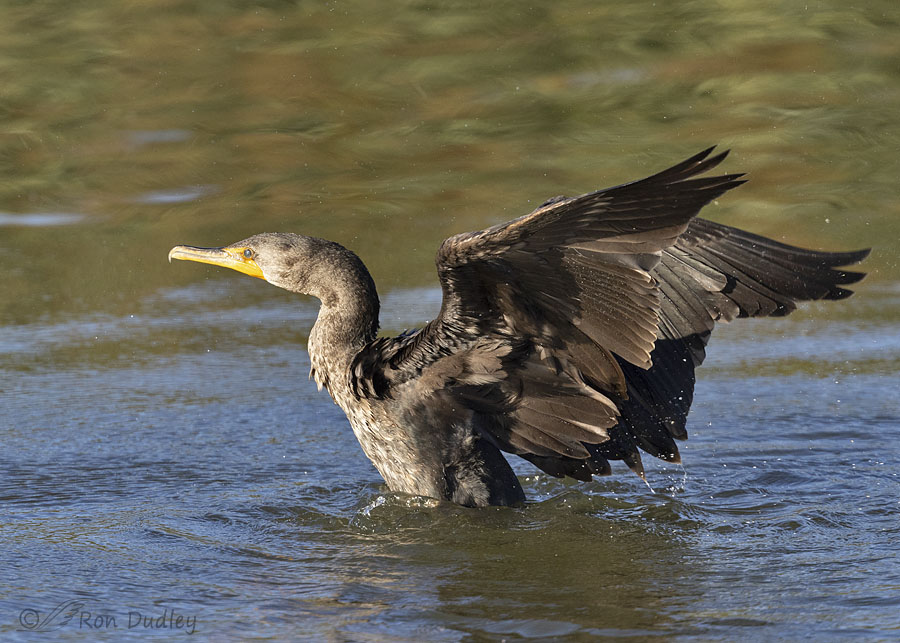
Typical of many birds, he concluded his bath with a vigorous wing flapping session.
I don’t know about you, but I often find mundane, everyday bird behaviors like these to be interesting in their own right but if you take lots of photos you never know what unexpected behavior you might document. I read recently in Cornell’s Birds of the World that ornithologists have observed one instance of this species using “a molted secondary feather as a brush-like tool in spreading preen-gland secretion to wings”.
Now wouldn’t that be something, to document with photos a cormorant as a tool user.
Ron
PS – Sorry, after processing this many photos and composing the text I ran out of time to include image techs.


Thanks for the “bellowing” video– now I’m curious to know why
all those underwater bubbles are being blasted out of the crocodile’s
rib area ?
It would probably take a physicist to explain that. I ain’t one.
Don’t you understand just how it felt with an icky substance stuck in its mouth? I delight in watching birds bathe anytime – they seem to derive a great deal of pleasure from it, but this bath had that addition to make it even more special.
I sure do understand, EC. Maybe not as well as most folks though. I’m extremely picky about what I put in my mouth.
Great series! Laugh out loud at the photo of the bird dragging ‘his’ open mouth through the water. Fascinating!
Thanks, Kathryn.
Cormorant as a tool user. I have taken so many photos of them with fish and sometimes huge Catfish that look almost impossible to take down. This is an excellent series showing what it takes to get rid of debris that so often stays with them. I always watch the Herons, Egrets, and Cormorants especially as they struggle with prey and think how fortunate we humans are to have hands.
Everett, I’m beginning to have trouble with one of my shoulders which sometimes makes it difficult and painful for me to use my left hand. It gives me a hint of what it would be like to not have hands at all.
“Tool use” was my thought, too, Ron. Excellent series of photos. And I think the bird must’ve used up all the calories from the fish on all of the activity after the swallow. Thanks, as always.
Ellen, I’d love to document cormorants as tool users. Doing so would be one of my highlights as a bird photographer.
Thanks for a fascinating sequence of photos of this young cormorant. I assume these pics are taken near your usual locale in Utah, proving that cormorants can be found inland in the U.S. and are not purely coastal as I have sometimes seen alleged.
I see large numbers of cormorants in my area on the New Jersey coast, have taken hundreds of photos, and have grown very fond of them. They have the very human trait of being individuals who can operate on their own, or quite intensely with just a single companion, or together with several companions, or in large groups. As you know they can be trained to catch fish for humans. This is one group of birds likely to survive with no help from humans. To the contrary, the USDA has authorized mass culling of these birds, because owners of fish farms and “sportsmen” don’t like competition from cormorants.
Hiss and spit at your final sentence. I really, really don’t like our species often.
Robert, fishermen at our local ponds feel the same way about cormorants. They keep complaining about them eating “their” fish.
He sure could have used some dental floss! 😉 Fascinating series, Ron — the wing flap shot is really something! I’m always amazed when birds are able to do gymnastics while floating on the water.
“He sure could have used some dental floss!”
Dental floss and hands. Thanks, Marty.
Looks like that cormorant was as annoyed by his “whatever” as we
humans are by spinach decorating our teeth. I was tickled by Kathy’s
tale of the “Watcher in the tree”, and now, thanks to you, will try to find a video of a bellowing male crocodile. Feathered Photography =
G-rated entertainment !
Kathy’s story was a good one.
Here’s a link to one of those videos.
Fun and interesting series, Ron. 🙂 Nothing like some little thing on you that doesn’t belong and, at times, hard to get rid of! 😉 Luv the “vibrations” to get the water everywhere it’s needed. Must be a challenge with a coat that’s somewhat water proof…..
Thanks, Judy. Some of his efforts and gyrations reminded me of my efforts when I get a popcorn husk stuck in my gums. It happens every time I’m in the waiting room at Ford Service.
Another interesting look into the lives of birds.
“…to document with photos a cormorant as a tool user?”
Now that would be something.
You can bet I’ll be watching for it, Michael. I’d have to get very lucky but occasionally I do.
Very nice catch! He just knew something had to go and persisted until everything felt right. I agree about the behavior watching…I find it fascinating. And sometimes you find out they are ‘pretty smart’. After watching a Bluejay hide a mouthful of hazelnuts in a divot near a tree, look around and pickup a leaf, lay it on top of his stash, look at it and put another leaf on it and probably feeling satisfied, fly off. Only when the Nuthatch I saw sitting in the tree above flew down, lifted the leaves and pick up a nut and fly off with it did I realize he was watching the Jay’s actions. The nuthatch returned once to get another nut. I find that behavior fascinating. Too many would not even notice the actions we have witnessed much less care but I feel my life has been enriched by it. I guess it’s why we do what we do…
“I guess it’s why we do what we do”
Kathy, it’s sure a big part of the reason I do what I do. Bird behaviors are endlessly fascinating.
I love that story Kathy. Bird-brained is so often a totally unwarranted and inaccurate criticism.